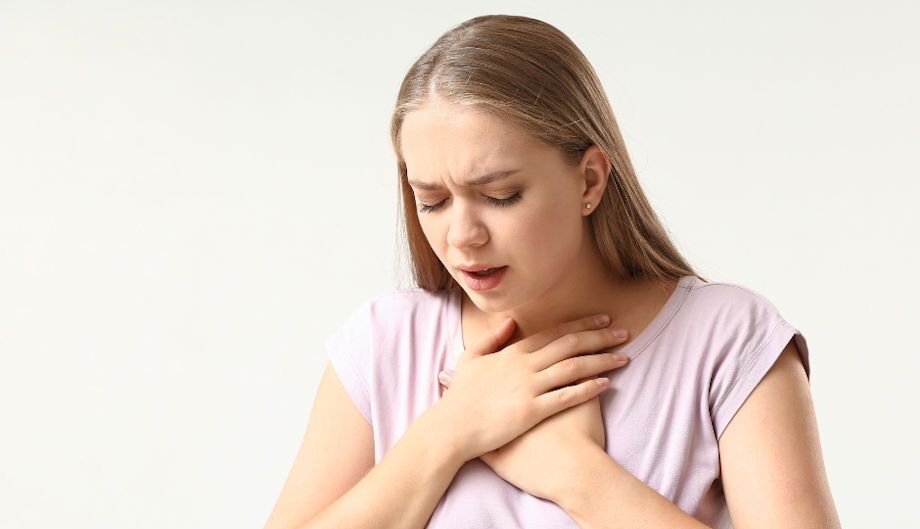Short answer: a panic attack itself isn’t dangerous or life-threatening, but it can feel terrifying and it can create risks (like avoiding life, or misreading a heart problem). The key is knowing when it’s “just” panic, when to call 911, and how to ride it out safely. source1 source2
What a panic attack is (and isn’t)
A panic attack is a sudden surge of intense fear with physical symptoms, racing heart, chest pain, shortness of breath, dizziness, chills, tingling, a sense of doom, that usually peaks within minutes. Many people are sure they’re having a heart attack; that’s how real it feels. But medically, the episode itself doesn’t damage your heart or lungs and typically resolves on its own. source1 source2
People who have repeated, unexpected attacks plus ongoing worry/avoidance may have panic disorder, a treatable anxiety condition. source
The real risks to watch for
- Misreading a true medical emergency. Heart attacks and panic attacks can overlap in symptoms; if you’re unsure, treat it like a heart emergency and call 911. source
- Spiral into avoidance. Fear of future attacks can lead to agoraphobia (avoiding places/activities), shrinking your life and independence. source
- Accidents during an attack. If one hits while driving, on a ladder, or swimming, your safety margin drops, pull over, sit, or get to a safe spot. (General safety guidance; see 911 advice above.) source
When to call 911 right now
- New or unusual chest pain, pain radiating to arm/jaw/back, or you’re not sure whether it’s heart vs. panic.
- Severe shortness of breath, fainting, or heart-disease risk factors (age, family history).
When in doubt, don’t gamble – call 911. source
What to do in the moment (a quick plan)
- Name it. “This is a panic attack. It’s uncomfortable, not dangerous. It will pass.” (Helps interrupt the fear cycle.) source
- Breathe low and slow. Inhale through the nose ~4 seconds, exhale ~6–8 seconds, for a few minutes. (Slower exhale settles the alarm system.) source
- Ground with 5-4-3-2-1. Name 5 things you see, 4 you feel, 3 you hear, 2 you smell, 1 you taste. It pulls attention out of the spiral. source
- Stay where you are (if safe). Let the wave crest and fall; fleeing can “teach” your brain that the place was dangerous and feed avoidance next time. source
How to prevent the next one
- Evidence-based therapy (especially CBT) trains you to reinterpret symptoms and break the panic loop; it’s first-line and highly effective. Medications can also help and are often paired with therapy.
- Lifestyle supports: steady sleep, exercise, cutting back caffeine/stimulants—lower your baseline alarm level.
So,
Panic attacks feel dangerous, but they aren’t inherently harmful. The danger is missing a real heart problem or letting fear shrink your life. Learn the red flags, have an “in-the-moment” plan, and consider therapy/medical care, panic is very treatable.
If you’re in crisis or thinking about self-harm: Call or text 988 or chat at 988lifeline.org (U.S., 24/7). For immediate danger, call 911. 988 Lifeline
Ayurveda’s Perspective on Panic Attacks
Ayurveda wouldn’t use the modern phrase “panic attack,” but it describes a nearly identical state: sudden surges of fear, restlessness, and loss of grounding. These are seen as acute flare-ups of Vata imbalance, sometimes with Pitta heat mixed in.
1. Root Cause in Ayurveda
- Vata Dosha (air + space):
- Governs the nervous system, breathing, circulation, and thought flow.
- When aggravated (by irregular routines, overstimulation, excess caffeine, trauma), Vata becomes unstable.
- Symptoms: palpitations, trembling, shortness of breath, dizziness, racing thoughts.
- Governs the nervous system, breathing, circulation, and thought flow.
- Pitta involvement (fire):
- If Pitta joins, panic feels “hot”: sweating, flushed face, anger-fear mix, acid reflux during episodes.
- If Pitta joins, panic feels “hot”: sweating, flushed face, anger-fear mix, acid reflux during episodes.
- Ojas depletion (vital energy):
- Frequent panic attacks erode Ojas (immunity + resilience), leaving the body more sensitive to stress triggers.
- Frequent panic attacks erode Ojas (immunity + resilience), leaving the body more sensitive to stress triggers.
In short: panic = Vata storm, sometimes fueled by Pitta heat, hitting when Ojas is weak.
2. Ayurvedic Signs That Panic Is Building
Ayurveda pays attention to subtle early signals before an attack:
- Dryness (skin, lips, mouth).
- Cold hands/feet, restless legs.
- Irregular appetite/digestion.
- Racing thoughts at night, difficulty grounding before sleep.
- Heightened sensitivity to noise or sudden changes.
Catching these early helps prevent the “storm.”
3. Ayurvedic Interventions for Panic
Dinacharya (Daily Routine)
- Consistency is medicine for Vata: eat, sleep, and wake at the same times daily.
- Bedtime by 10 PM; waking before sunrise.
- Gentle morning rituals: warm water, oil massage, light yoga.
Food & Diet
- Warm, moist, grounding foods: oatmeal with ghee, soups, root vegetables, rice, cooked apples/pears.
- Avoid stimulants (coffee, energy drinks, excess tea) that inflame Vata.
- Reduce very spicy, greasy, or acidic foods if Pitta is involved.
Herbal Support
- Ashwagandha: calms nervous system, lowers cortisol.
- Brahmi (Bacopa): sharpens clarity, eases restless thoughts.
- Jatamansi: deeply calming, aids sleep.
- Tulsi (Holy Basil): balances Vata, clears mental fog.
(Note: Herbs should be taken under practitioner guidance, especially if on medication.)
Breath & Mind Practices
- Nadi Shodhana (alternate nostril breathing): instantly balances brain hemispheres, calms fear.
- Bhramari (humming bee breath): vibrational sound reduces panic intensity.
- Grounding Yoga: child’s pose, forward bends, and slow sun salutations.
- Mantra Meditation: chanting “Om Shanti” or simply repeating “I am safe” anchors the mind.
Therapies
- Abhyanga (warm oil massage): sesame oil for Vata, coconut for Pitta. Daily or weekly.
- Shirodhara (stream of warm oil on forehead): deeply calms Vata; often prescribed in Ayurveda clinics for anxiety disorders.
4. Ayurveda’s Safety Note
Ayurveda emphasizes that panic attacks themselves aren’t physically harmful but warn of underlying imbalance. The goal is not just to calm attacks when they come, but to strengthen resilience, build Ojas, and keep Vata steady through routine, food, and lifestyle.
The Ayurvedic Bottom Line
Panic attacks = Vata storm + weak Ojas, sometimes with Pitta heat.
- Calm Vata > with routine, warmth, grounding food, and oil therapies.
- Support Ojas > with nourishing diet, sleep, and herbs.
- Restore Sattva (clarity) > with meditation, nature, and mantra.
This doesn’t replace medical or psychological care, but it complements it beautifully, adding stability where modern life constantly ungrounds us.



